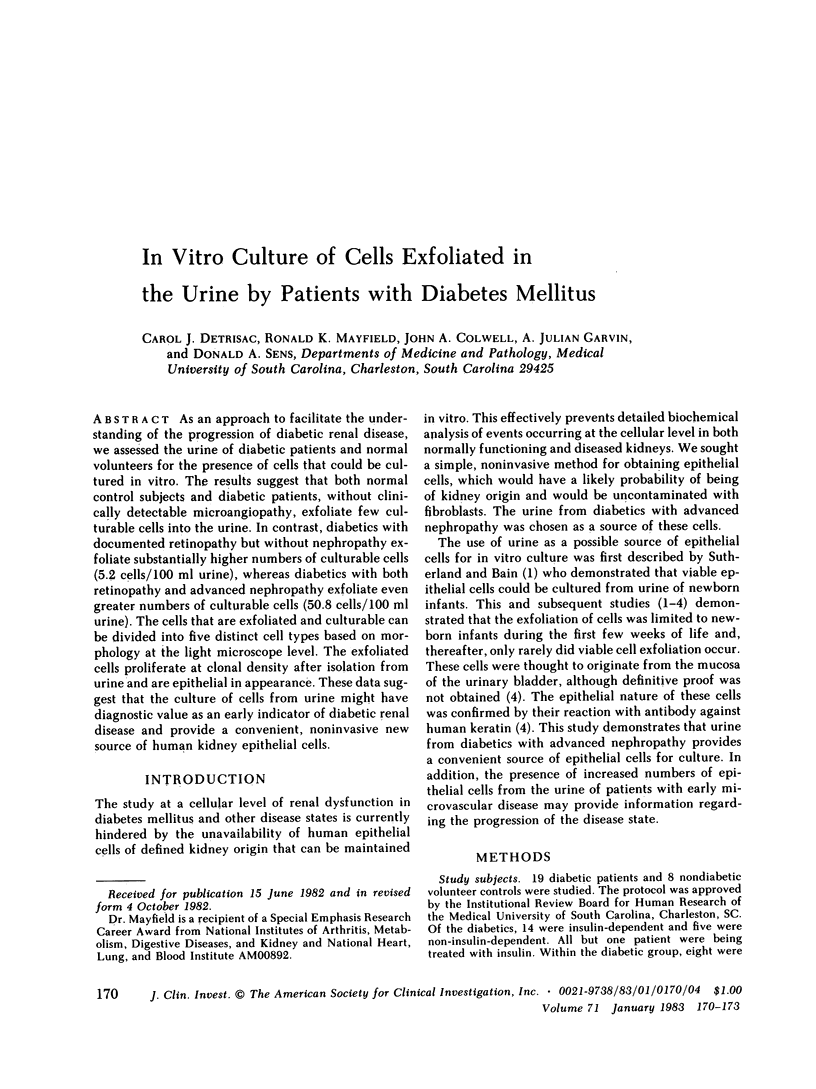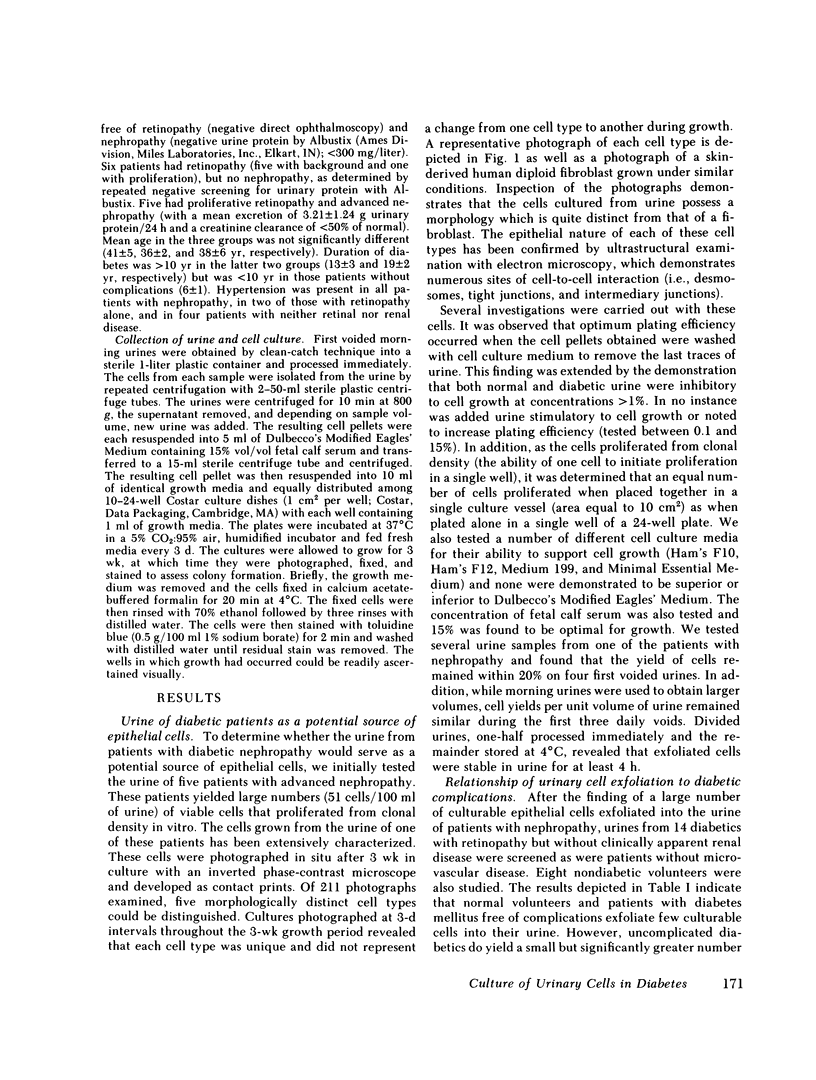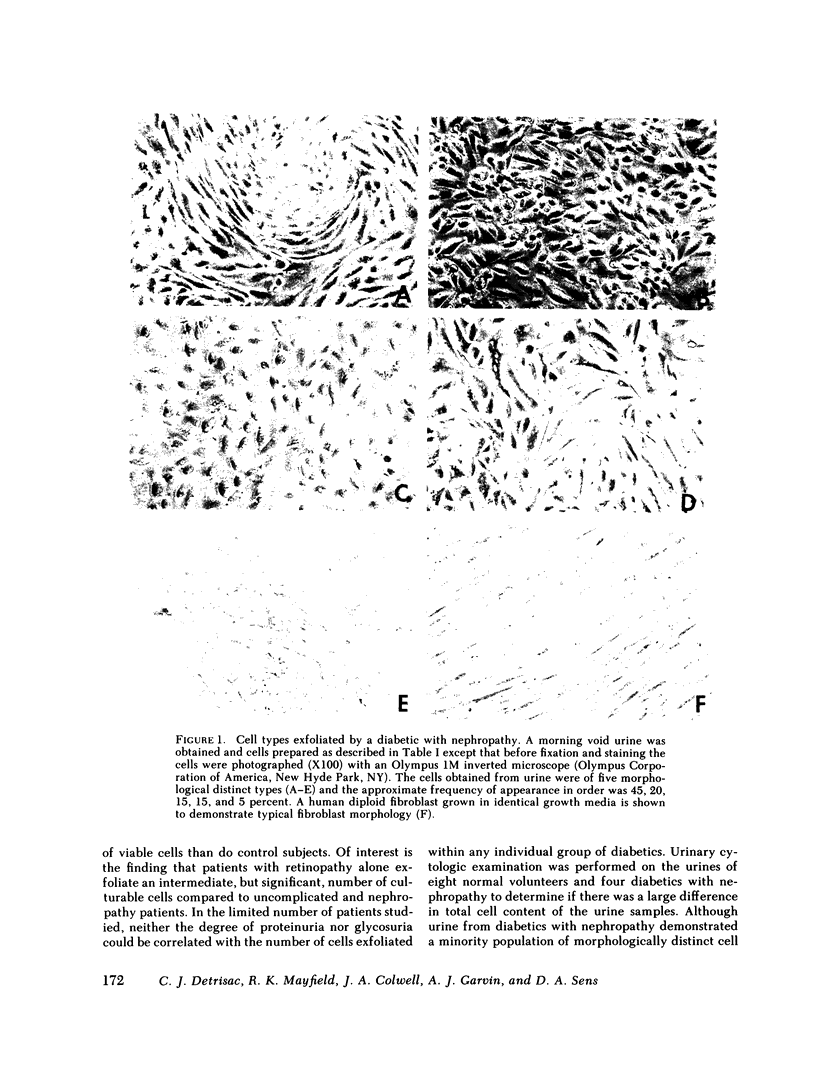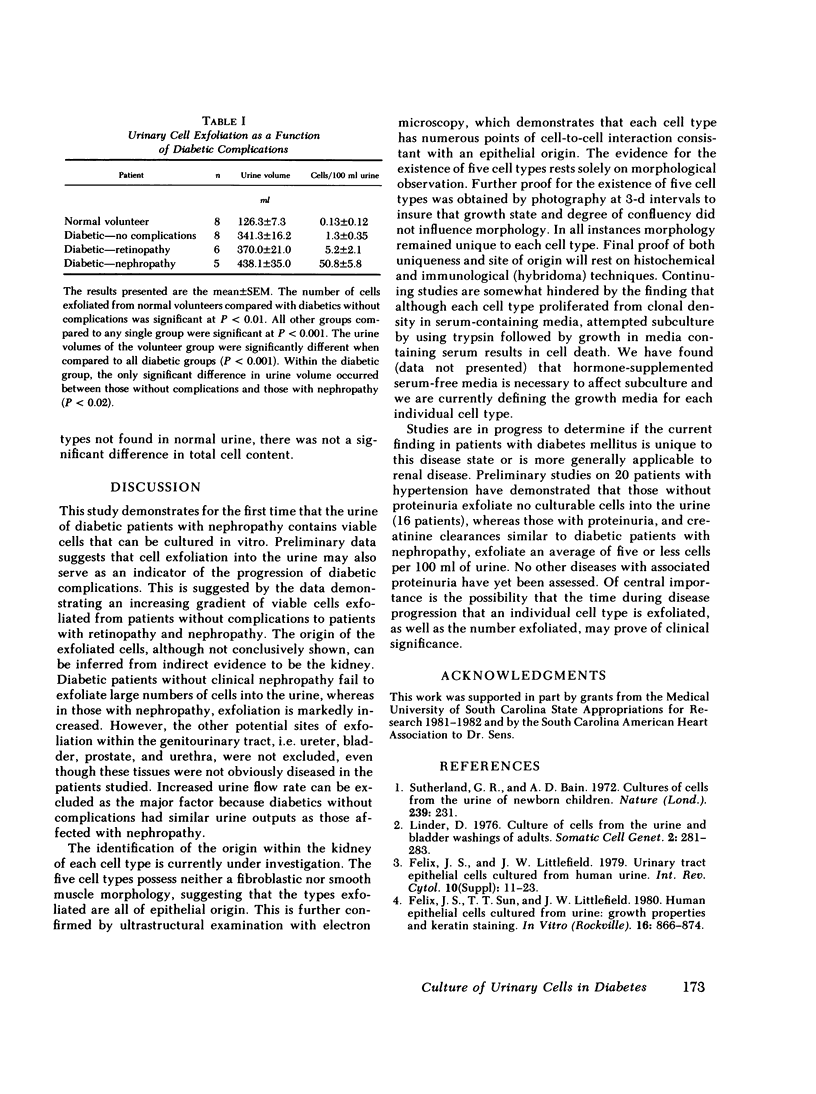Abstract
As an approach to facilitate the understanding of the progression of diabetic renal disease, we assessed the urine of diabetic patients and normal volunteers for the presence of cells that could be cultured in vitro. The results suggest that both normal control subjects and diabetic patients, without clinically detectable microangiopathy, exfoliate few culturable cells into the urine. In contrast, diabetics with documented retinopathy but without nephropathy exfoliate substantially higher numbers of culturable cells (5.2 cells/100 ml urine), whereas diabetics with both retinopathy and advanced nephropathy exfoliate even greater numbers of culturable cells (50.8 cells/100 ml urine). The cells that are exfoliated and culturable can be divided into five distinct cell types based on morphology at the light microscope level. The exfoliated cells proliferate at clonal density after isolation from urine and are epithelial in appearance. These data suggest that the culture of cells from urine might have diagnostic value as an early indicator of diabetic renal disease and provide a convenient, noninvasive new source of human kidney epithelial cells.
Full text
PDF



Images in this article
Selected References
These references are in PubMed. This may not be the complete list of references from this article.
- Felix J. S., Littlefield J. W. Urinary tract epithelial cells cultured from human urine. Int Rev Cytol Suppl. 1979;(10):11–23. doi: 10.1016/s0074-7696(08)60609-9. [DOI] [PubMed] [Google Scholar]
- Felix J. S., Sun T. T., Littlefield J. W. Human epithelial cells cultured from urine: growth properties and keratin staining. In Vitro. 1980 Oct;16(10):866–874. doi: 10.1007/BF02619424. [DOI] [PubMed] [Google Scholar]
- Linder D. Culture of cells from the urine and bladder washings of adults. Somatic Cell Genet. 1976 May;2(3):281–283. doi: 10.1007/BF01538966. [DOI] [PubMed] [Google Scholar]
- Sutherland G. R., Bain A. D. Culture of cells from the urine of newborn children. Nature. 1972 Sep 22;239(5369):231–231. doi: 10.1038/239231a0. [DOI] [PubMed] [Google Scholar]








